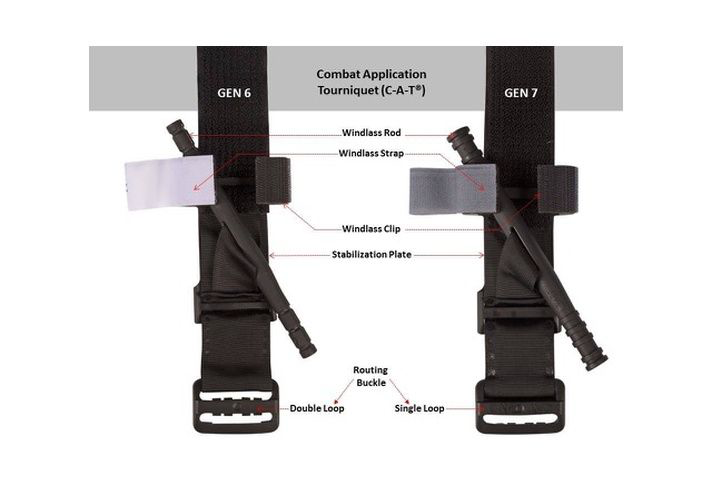An IFAK is to be worn, carried, or kept in close proximity. Each person should have their own. Consider an IFAK when you carry a weapon, are in a remote area, or in a situation where there could be a mass casualty.
Wear: Keep it on your body. Wear it on your dominant side (or opposite when carrying a weapon), or in a location that can be reached with either hand. Wear it in a location where other’s could easily find it if you are in a scenario where injury risk is high. For EDC it is acceptable to wear it on an ankle, cargo pocket, purse, or inside waistband. In safe zones or in transition it may be acceptable to keep the IFAK in your vehicle or office.
Use: An IFAK is intended for the wearer/carrier. It’s not ideal to use your IFAK on another person if they have their own IFAK.
Organization: The IFAK contents should be individually packaged and labeled. Non-sterile contents should be pre-open to increase speed of access. You don’t want to have to be ripping through plastic packaging to access a tourniquet.
Learn: Know how to treat injuries and illness in a worst case scenario (WCS). There are events where EMS is not available. It could be due to your adventures in a remote area or a crisis brought about by civil unrest where EMT are not able to get to you. Either way, the Grayman WCS First-Aid Guide has you covered.
IFAK CHECKLIST
ICE card
- Hemostatic dressing (Celox, Quikclot)
- Tourniquet
- Burn dressing
- Non-latex gloves (nitrile)
- Medication
- Ibuprofen (200mg)
- Aspirin (325mg)
- Epinephrine (based on individual needs)
- Assorted prep pads
- 2x Povidone
- 2x BZK
- 2x Alcohol
- Israeli dressings
- Tools
- Pen light
- Permanent marker
- Pressure dressing
- Trauma shears
- Duct tape
- Vented chest seal
- Medical tape
- Nasopharyngeal airway tube
- Pneumothorax kit
- Assorted bandages (for small cuts)
- Antibiotic ointment
View the Worst-Case-Scenario First-Aid Guide.
Combat Application Tourniquet (CAT)

APPLICATION
》Place the tourniquet high and tight on the extremity (arm or leg), near the armpit or groin. (At least 2″ from nearest joint)
》Pull the “tail” strap of the tourniquet tight and twist the windlass rod until the bleeding stops. Secure the windlass rod in the clip and pull over the strap to keep the tourniquet tight and in place.
STAGING
》Unravel and open TQ, begin to fold it in sections equal to the length of the TQ base until all but 1-3 inches of the red tip end is overlapping.
》Run the red tip end through the outer buckle then stick it to itself.
》Stow the rod in the clip and leave the retainer strap open. (It should not be covering the rod inside the clip)
This article was originally written by the Grayman Briefing. Stay in the know, sign up for Intel and Situational Awareness alerts pushed to your phone on emerging threats and preparedness warnings. Click HERE to subscribe to the Grayman Briefing.
